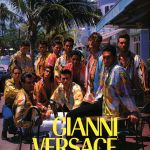
Is archival fashion making a comeback?
The future of streetwear may be hiding in its past
December 23rd, 2019
In his last interview with Dazed, Virgil Abloh said clearly that 2020 will be the year streetwear dies. A death more than announced by the trend that pushed fashion towards a new concept of tailoring that Abloh himself explored in Off-White™'s Pre-Fall 2020 collection. In the same interview, Abloh pointed to a new direction:
«How many more t-shirts can we own, how many more hoodies, how many sneakers? I think that like we’re gonna hit this like, really awesome state of expressing your knowledge and personal style with vintage – there are so many clothes that are cool that are in vintage shops and it’s just about wearing them. I think that fashion is gonna go away from buying a boxfresh something; it’ll be like, hey I’m gonna go into my archive».
Abloh's words have put the media in turmoil in the industry but, in addition to not having the apocalyptic charge that many believe, they have had the merit of shedding light on the topic of archival fashion, which on Instagram, through pages focused on photos of magazines, of old fashion shows and still products, has gathered many followers and thanks to the development of new online platforms has rewritten the rules of the secondhand market.
What exactly is archival fashion? It's a matter of culture. Abloh talks about expressing style and knowledge: a combination of the ability of luxury vintage to signal belonging to a community, to demonstrate a worldview. Many people became passionate about fashion with Supreme's drops or Abloh's sweatshirts, but as their culture grew, they began to realize that the inspirations of the present came from the past. Tired of waiting for the next release, the new drop or the new colorway, they look to the past, to those rare pieces, born before the streetwear boom, that maybe have their own history and their own uniqueness. The works dating back to the 1990s by Rei Kawakubo, Yohji Yamamoto, Helmut Lang and Martin Margiela seem to come from a purer creativity, less adulterated by commercial logic. The fashion of the past possesses a nostalgic aura, almost mythological (hence the expression "grail", taken from the legend of the Holy Grail, precisely a mythological artifact) and the archival pieces are perceived as closer to the true spirit and creativity of those Designers. Grailed dedicated a specific Instagram page to his rarest pieces named @foundongrailed, some of the best Instagram profiles for archival fashion are pages like @holygrails, @raf_simons_archives, @tagsandthreads, @oldceline or actual stores like @middleman.store, @silverleague, @pluggermany o @lakevienna. You'll find in the gallery the best profucts from @holygrails.
Nostalgia aside, the discourse of archival fashion goes into the wider force game that concerns second-hand luxury that, thanks to platforms such as Vestiaire Collective, Grailed and StockX has given a new life to the industry. Even the concept of a vintage store has been layered, evolving from a "graveyard of clothes left" to a small shop of old clothes, a specialized e-comerce platform, to luxury boutiques comparable to antique dealers or art galleries that they sell specific and very rare items such as those whose Instagram profiles are shown at the top. This growing differentiation is why the luxury vintage market is growing by 25% every year, a very high value compared to that of the primary market. Mixing the heritage of a brand or even just the démodé charm of a certain garment to modern and current items is not simply a future trend or the next direction of fashion but, as indicated by Abloh himself, a new form of personal expression that makes everyone Potential participants of that collective phenomenon that is the mod and is part of that process of democratization of which Abloh is the first and declared spokesman.







































































